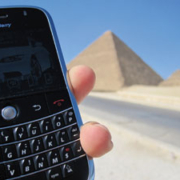Social media and disaster medicine
Digital social media networks permeate the lives of many people in developed and developing nations. In other words, when a disaster occurs anywhere on the planet, with dire consequences for the local population, the news can instantly be relayed to an international audience. The marriage of social media and disaster medicine and management was inevitable. However, the power of these networks, with both negative and positive consequences, is just now beginning to be realised and harnessed by the medical community in responding to disasters.
by Dr Paul S. Dhillon and Dr Fergal H. Cummins
What is social media?
Social media is a nebulous term which was first used in 2004 according to the Miriam-Webster Dictionary. In 2010 Andreas Kaplan and Michael Haenlein attempted to define social media1 [1] as a ‘group of Internet-based applications that build on the ideological and technological foundations of Web 2.0, and that allow the creation and exchange of user-generated content’. An essential factor in their definition was that the users of the technology are not passive in receiving information, but now had the ability to directly influence the generation of information and act as local hubs within their own communities to propagate messages and ideas.
There is a gamut of different forms of social media available to the public and business. The more commonly known and used are Facebook and Twitter, but this is not the complete remit of social media which also include different forms such as blogs, micro-blogging, wikis, photo streams, video, social bookmarking, RSS feeds, podcasting, professional networks, and social email. This list is by no means exhaustive as there are some types of social media that defy definition at this time.
One issue that cannot be argued is that social media have fundamentally changed the way people interact with each other. Borders are much more liquid: as long as an Internet or mobile connection is available, international media are accessible. One



